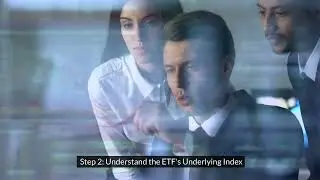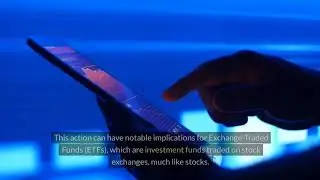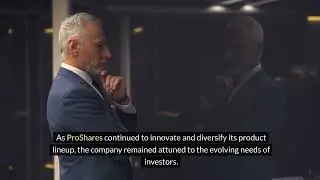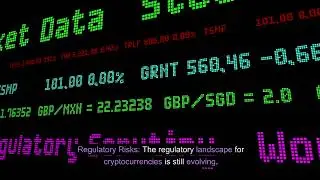How To Invest in ETFs | Ultimate Guide
Welcome to Investing in #ETFs, where we bring you the latest insights and #expert #advice on #financial matters.
Today, we have a topic that's been gaining a lot of attention - How to Invest in #Exchange-Traded #Funds, or ETFs.
Whether you're a #seasoned investor or just starting out, understanding how to invest in ETFs can be a #game-changer for your financial #portfolio.
So, buckle up, because by the end of this video, you'll have all the knowledge you need to confidently invest in ETFs.
Let's start with the #basics.
What exactly is an ETF?
Exchange-Traded Funds are investment funds that are traded on stock exchanges, much like individual #stocks. They're designed to track the #performance of a specific index, commodity, or a basket of #assets. ETFs provide investors with instant diversification, making them a popular choice for those looking to spread their investments across different sectors.
Now, let's talk about the advantages of investing in ETFs.
Diversification: As mentioned earlier, ETFs offer instant diversification by investing in a variety of assets.
Liquidity: ETFs can be bought and sold throughout the trading day at market prices, providing liquidity to investors.
Lower Costs: ETFs typically have lower expense ratios compared to mutual funds, making them a cost-effective investment option. Transparency: The holdings of an ETF are disclosed daily, allowing investors to know exactly what assets they own.
Flexibility: ETFs can be bought or sold on the stock exchange at any time during market hours, giving investors flexibility in their trading strategies.
Now that we understand the benefits of ETFs, let's dive into the different types available.
Index ETFs: These track a specific index like the S&P 500, mirroring its performance.
Sector ETFs: These focus on specific industry sectors, allowing investors to target areas of the market they believe will outperform.
Bond ETFs: These invest in a variety of bonds, providing exposure to fixed-income securities.
Commodity ETFs: These track the price movements of commodities like gold, silver, or oil.
International ETFs: These provide exposure to stocks from various countries outside your home country.
When selecting an ETF, it's crucial to consider your investment goals, risk tolerance, and time horizon. Different ETFs cater to different strategies, so choose wisely.
Now, let's get into the nitty-gritty of how to invest in ETFs. Open a Brokerage Account: Start by opening a brokerage account with a reputable platform. Ensure it offers a wide range of ETFs and has a user-friendly interface. Research and Select ETFs: Conduct thorough research on the ETFs available. Look at their historical performance, expense ratios, and the underlying assets they track. Choose ETFs that align with your investment goals. Determine the Amount to Invest: Decide how much you want to invest in ETFs. Remember, it's crucial to only invest what you can afford to lose. Place Your Order: Use your brokerage platform to place an order for the chosen ETFs. You can specify the number of shares you want to buy or set a limit order if you have a specific price in mind. Monitor Your Investments: Keep a close eye on your ETF investments. Regularly review their performance and make adjustments to your portfolio as needed. As with any investment, success in ETF investing requires strategic thinking.
Here are some tips to help you make the most of your ETF investments. Diversify Your Portfolio: While ETFs provide instant diversification, it's still essential to diversify across different asset classes to spread risk. Stay Informed: Keep yourself updated on market trends, economic indicators, and any news that might impact your investments. Reinvest Dividends: Many ETFs pay dividends. Consider reinvesting these dividends to compound your returns over time. Review and Rebalance: Periodically review your portfolio to ensure it aligns with your investment goals. Rebalance if necessary to maintain your desired asset allocation. Consider Dollar-Cost Averaging: Instead of investing a lump sum, consider using dollar-cost averaging.
This involves investing a fixed amount at regular intervals, reducing the impact of market volatility. Congratulations! You've now completed the ultimate guide on how to invest in Exchange-Traded Funds. Remember, investing always comes with risks, and it's crucial to do your own research or consult with a financial advisor before making any investment decisions.
If you found this video helpful, don't forget to like, share, and subscribe for more insightful content. Thank you for joining us and happy investing!
#stockinvestment #investmentstrategies #stockrecommendations #etfstrategiesandtactics































